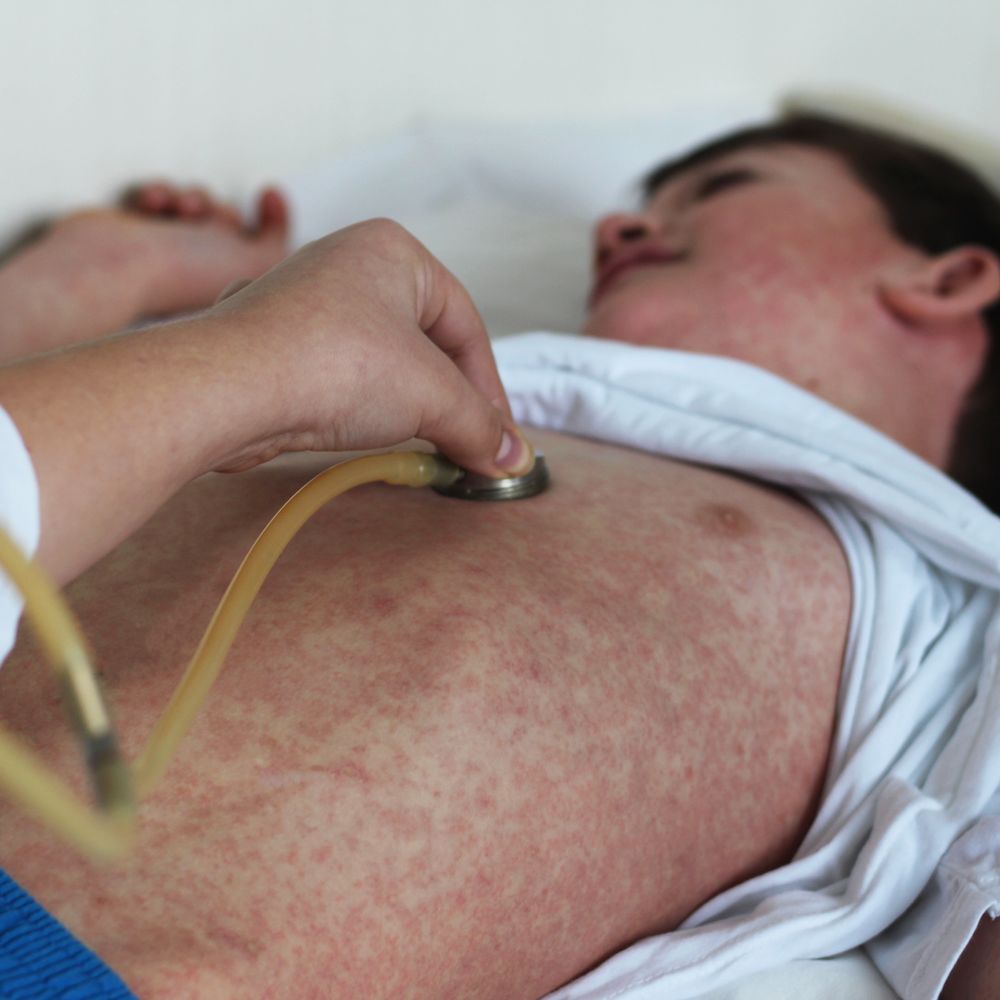Virus samples from the global outbreak indicate incipient adaptation to humans
Changed surprisingly quickly: The causative agent of the current monkeypox outbreak has changed significantly compared to the African virus of origin, as DNA analyzes reveal. The pathogen differs from the monkeypox viruses of earlier outbreaks in Africa by 50-point mutations. According to the researchers in “Nature Medicine”, this is an unusually rapid change in this normally slow-mutating virus. Some of these mutations indicate that this animal virus is gradually adapting to humans.
Monkeypox is actually a very rare disease in humans and is mainly limited to Africa. In most cases, infection occurs only when people come into very close contact with an infected rodent or monkey. But since the beginning of May 2022, there have been an unusually large number of monkeypox cases outside of Africa: by the end of May there were already several hundred, since then the number of cases worldwide has risen to a good 3,000 – more than ever before.
“We see here the first transnational outbreak with no known epidemiological links to West or Central Africa,” explains Joana Isidro from the National Center for Health in Lisbon and her colleagues. But what helped the monkeypox virus, which is actually difficult to transmit from person to person, to spread in this unusual way?
Common origin in Nigeria
In order to clarify this and also narrow down the origin of the virus, Isidro and her team subjected 15 samples of the monkeypox virus from patients in different countries in Europe, North America and Australia to a comparative DNA analysis. Based on this data, they were able to reconstruct the genetic development and origin of the pathogen and also to investigate the number and type of mutations.

The result: “All virus isolates of the outbreak are genetically very similar to each other, which speaks for a single, common origin of the current outbreak,” report Isidro and her colleagues. The monkeypox virus currently circulating is derived from a pathogen that caused a major local outbreak in Nigeria in 2017 and 2018. This virus variant was also occasionally introduced to Israel, Singapore and the USA, but disappeared there again.
The researchers suspect that this virus continued to develop undetected after the outbreak in Nigeria. These “silent” infections probably took place in the African endemic area, and although they do not rule out a hidden spread outside of Africa, it is less likely.
Unexpectedly high mutation rate
What is surprising, however, is how much the monkeypox virus has changed genetically: compared to the initial variant of 2017/2018, the viruses currently occurring worldwide carry around 50 point mutations in their genome. In their DNA, individual bases have been changed, inserted or removed at 50 points. “This level of mutations is six to twelve times greater than would be expected from the orthopoxvirus mutation rate previously determined,” write Isidro and her team. Typical for smallpox viruses are only around one to two base changes per year.
Among the 50 mutations are some that could affect the human immune system’s immune response to the monkeypox virus. Three DNA changes result in the exchange of three amino acids in the monkeypox virus glycoprotein B21. “Serological studies indicate that this monkeypox protein has several immunologically important attachment sites and is therefore an important target for antibodies,” the researchers explain.
First adaptations to humans
However, the DNA comparisons also revealed that the monkeypox virus has evolved over the course of the current outbreak. Although there were only a few weeks between the oldest and youngest virus samples, the scientists have already identified DNA differences at 15 sites in the virus genome. These 15 point mutations must therefore have occurred during transmission from person to person.
“These data thus reveal the first signs of ongoing virus evolution and potential adaptation to humans,” state Isidro and her colleagues. That could mean the monkeypox virus is starting to improve its human-to-human transmission capabilities. However, additional studies must now show whether this is actually the case.




